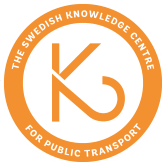Article highlighted
The impact of e-scooters on public transport

Shared e-scooters can be viewed as a complement or a potential competitor to public transport. However, until now, it has been unclear how the interaction between public transport and these relatively new vehicles really works.
K2 researcher Pengxiang Zhao is studying how well shared e-scooters complement public transport as a solution for the distance to and from stops and stations. In one study, he compared 124 European cities, including 16 in Sweden, by calculating the percentage of all e-scooter trips that feed to public transport.
"In Gothenburg, Malmö, and Stockholm, barely a third of all e-scooter trips are made to reach a public transport stop or station. In smaller cities, it’s not as common. The remaining 70 percent may include trips that replace public transport or are made for leisure," explains Pengxiang Zhao.
"The results in Sweden reflect travel patterns in the rest of Europe. It indicates a need to improve the integration between shared e-scooters and public transport," Pengxiang continues.
Pengxiang has also examined how infrastructure and the built environment affect how well scooters integrate with public transport. The distance to the nearest public transport station is the most significant factor, according to a study conducted in Stockholm and Helsinki.
"In sparsely populated areas, where the distance to the nearest stop is longer, e-scooters are more frequently used to feed to public transport," says Pengxiang Zhao.
"In areas with denser stops, it’s more common for scooters to replace public transport trips," Pengxiang continues.
More knowledge is needed
Pengxiang has not yet explored all aspects of how public transport is affected by shared e-scooters. Next, he will study how these transport modes impact the accessibility to public transport for different groups in society.
"It's great if e-scooters can be integrated with public transport to solve the distance to and from stops and stations. But at the same time, we must not forget that there are people who, for various reasons, find it difficult to use these vehicles," emphasizes Pengxiang Zhao.
Pengxiang Zhao is a researcher at the GIS Center, Department of Physical Geography and Ecosystem Science at Lund University. He leads the K2 project Understanding the impact of shared e-scooters on spatial accessibility and social equity of public transport in a Nordic context.
